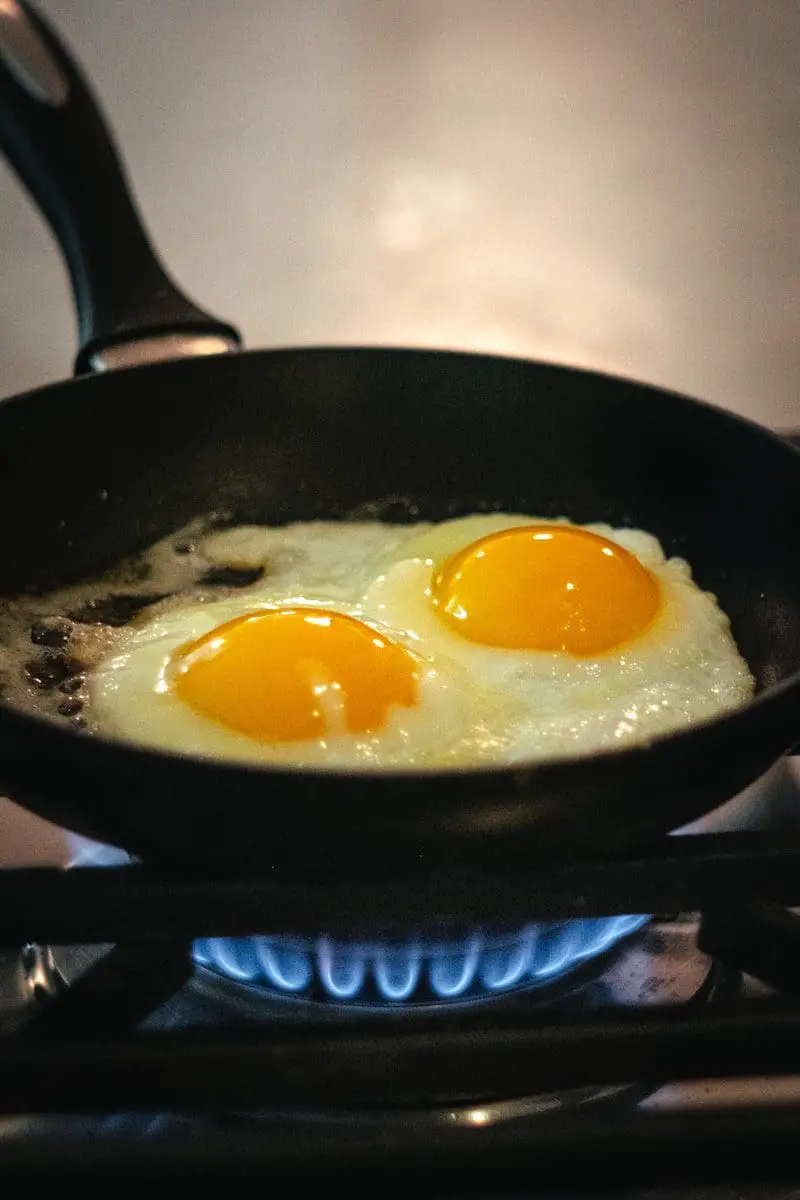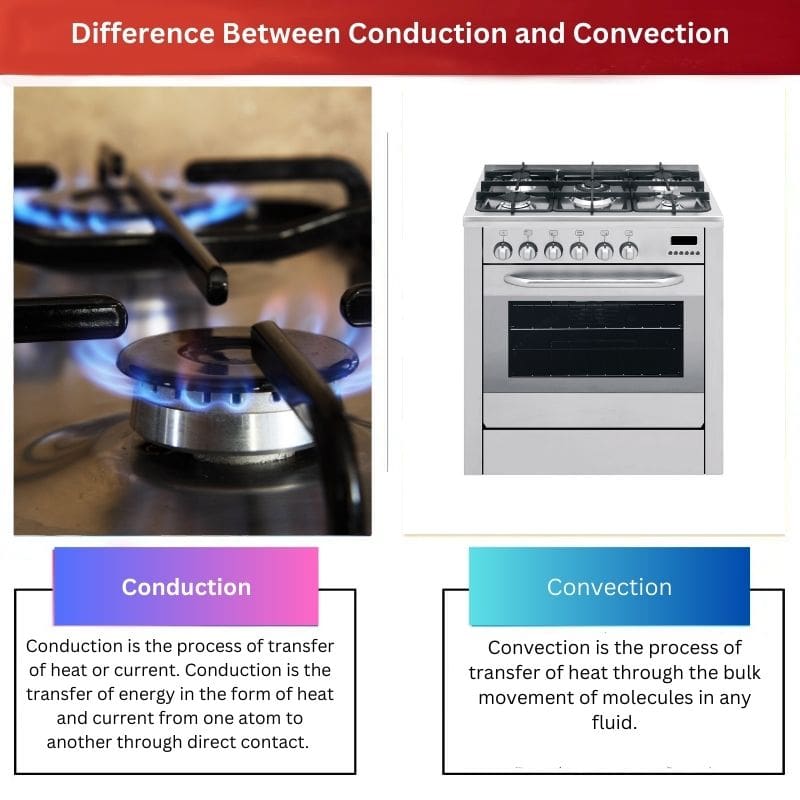In simple words, heat can be explained by the working of molecules, and the energy emitted creates heat, or the emitted energy is converted into heat.
For example, when a person does exercise or any other activity, their body gets heated up, and sweat is produced. Or during cooking, when food gets warm or heated, it is simply the transfer of heat through conduction or convection.
The reason behind the transfer of heat is scientific, it might seem easy and cliche to warm food, but it has scientific reasons behind it.
The transfer of heat can be direct or indirect, there are several materials as well in which heat can be transferred, and in some, it cannot be transferred for example, not all types of plastic cannot handle the heat.
Key Takeaways
- Conduction involves the direct transfer of heat through a solid material, whereas convection relies on the movement of fluids or gases for heat transfer.
- Conduction occurs faster in metals than non-metals, while convection is more efficient in liquids and gases than in solids.
- Insulators can minimize heat transfer through conduction, whereas minimizing convection requires reducing fluid or gas movement.
Conduction vs. Convection
The difference between conduction and convection is that heat is transferred directly in conduction, whereas, in convection, heat is transferred through the fluid. Both of them lead to the emission of heat, but there are differences in the method.

Comparison Table
| Parameters of Comparison | Conduction | Convection |
|---|---|---|
| Definition | Transfer of heat between two objects through direct contact. | Transfer of heat within the fluid. |
| State of matter | Solid | Liquid or gas |
| Transfer of electric current | Allows | Does not allow |
| Density of particles | High density | Low density |
| Rate of transfer of heat | Slow | Faster |
What is Conduction?
Conduction is the process of transfer of heat or current. Conduction is the transfer of energy in the form of heat and current from one atom to another through direct contact.
The best transfer can occur in the solid state because the atoms are tightly packed, which enables a faster rate of transfer; the density of molecules affects the rate of transfer of heat, on contrary Liquids and gases are less efficient in the transfer of heat due to low density of molecules.
There are two types of conduction: conduction of heat and conduction of electricity.
Conduction of heat- when the temperature is increased in molecules, a vibration is produced, and this causes heat in molecules, and then the transfer of heat is caused within the tightly packed molecules.
Conduction of electricity happens due to the movement of charged particles through any medium. This movement of charged particles causes a current carried by ions or charged electrons.
Several factors affect the conduction: the difference in temperature, length, cross-sectional area, and material.
The conduction can be calculated through formula in theory by several methods, for example, by Ohm’s or Fourier’s law.

What is Convection?
Convection is the transfer of heat through the bulk movement of molecules in any fluid. The initial transfer of heat between the object and fluid occurs due to conduction, but afterward, the bulk movement in fluid particles creates convection.
The process of convection involves thermal expansion. When a fluid is heated from below the surface, the lower layer of liquid gets heated, which gets thermally expanded. The density of the molecule is as compared to the liquid on the upper surface.
There are two types of convection: natural convection and forced convection.
Natural convection- A type of convection in which a difference in temperature causes a difference in densities, where buoyant force plays a major role. for example, oceanic winds.
Forced convection- a type of convection in which External forces induce convection, for example, fans, Water heaters, geysers, etc.
Factors that affect convection are; medium ( liquid or gas), temperature, and a source that causes heat. One of the differences between conduction and convection is that convection does not support electric current.
Natural convection cannot be calculated easily, but forced Convection can be calculated theoretically through the formula given by Newton’s law of cooling. The formula is:-
| P =dQ /dt =hA(T−T0) |
- P= dQ /dt- the rate at which heat is transferred
- h – convection heat-transfer coefficient
- A – exposed surface area
- T – the temperature of the immersed object
- T0 – the temperature of the fluid which is under convection

Main Differences Between Conduction and Convection
- The heat transfer in conduction is slow. On the other hand, the heat transfer in convection is fast.
- Conduction supports electric conduction as well, but convection does not support electricity.

- https://www.sciencedirect.com/science/article/pii/S0375960106013247
- https://www.sciencedirect.com/science/article/pii/S0017931009000271

The difference between conduction and convection is very clear and well-explained. This article is full of insightful information and I’ve learned a lot from it.
I also found the explanation easy to follow and comprehensive.
I agree, I think this article is an excellent reference for understanding the conduction and convection processes.
The practical examples of conduction and convection provided in this article make it easy to relate the theoretical concepts to real-life situations. Great job!
I agree with your assessment, the examples really help in understanding the complex concepts.
I appreciate how the author has connected scientific concepts to everyday experiences, making it very accessible.